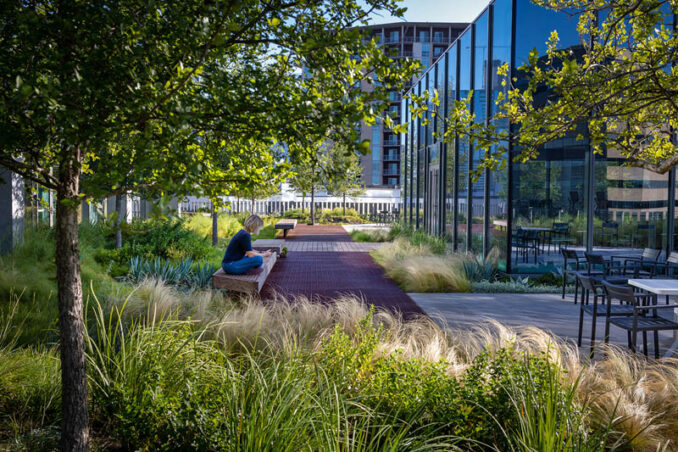
RiverSouth contributes to the social and ecological health of Austin’s urban environment through a landscape that uses green infrastructure strategies to cool ambient temperatures, increase biodiversity, provide on-site stormwater management, and establish design standards and ecosystem services that will benefit the city now and into the future.
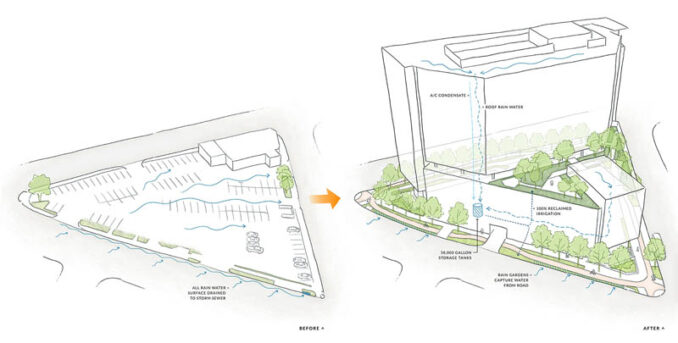
Located just south of downtown Austin’s treasured Lady Bird Lake, RiverSouth thoughtfully responds to its physical and environmental constraints to transform an underutilized, triangular site into a model for sustainable development within the district. Formerly the site of a single restaurant set within a solid block of surface parking, the lot was an unsightly, inhospitable space. Little shade or environmental benefits were provided by the few ornamental trees relegated to the parking lot’s edges, while the curb-to-curb impervious surfaces caused all stormwater to sheet-flow off the site to dump directly into storm sewers. The site’s redevelopment into RiverSouth, a 15-story LEED Gold office building, aims to create public and private spaces that are engaging, comfortable, and environmentally responsible.
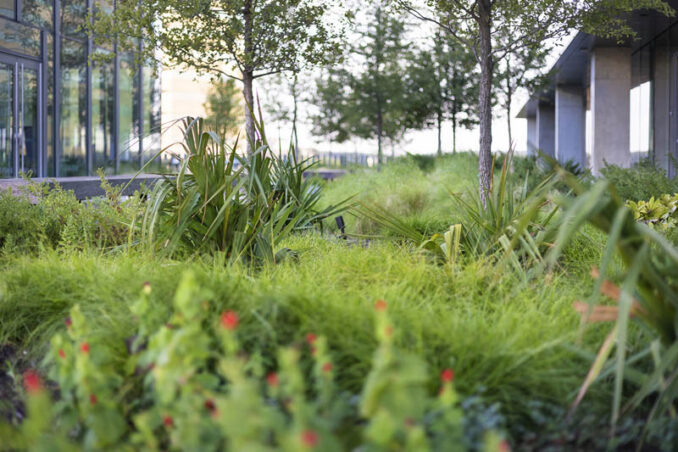
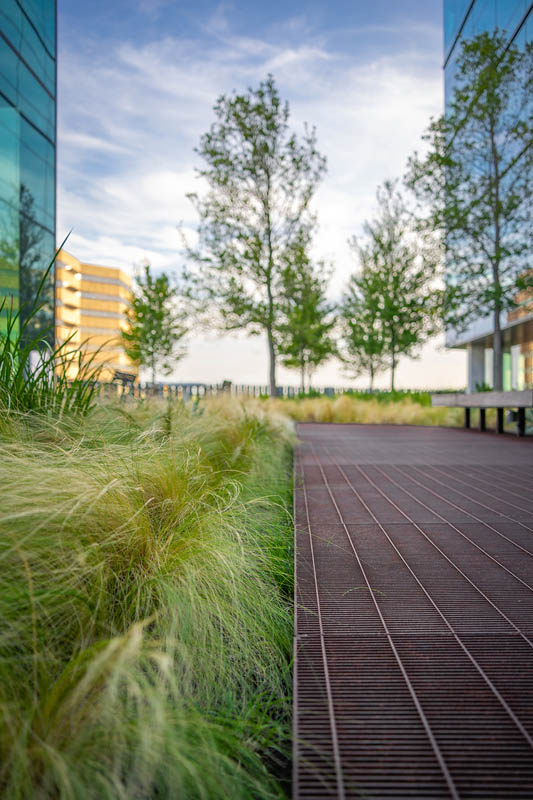
RiverSouth’s location within the Barton Creek floodplain and its adjacency to the Colorado River engendered a commitment to the sustainable management of water. All roof rainwater and A/C condensate is captured and stored for reuse in irrigation. The water storage tanks, with a capacity totaling 58,000 gallons, allow for all planting to be fed entirely by reclaimed water. In addition to treating 100% of the stormwater from within the site, the landscape design integrates over 800 square feet of rain gardens within the right of way that filter the polluted runoff from the adjacent road.
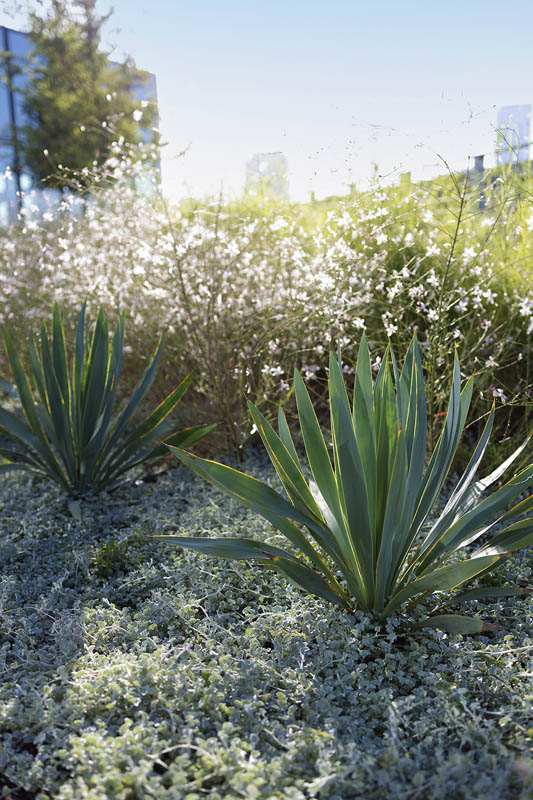
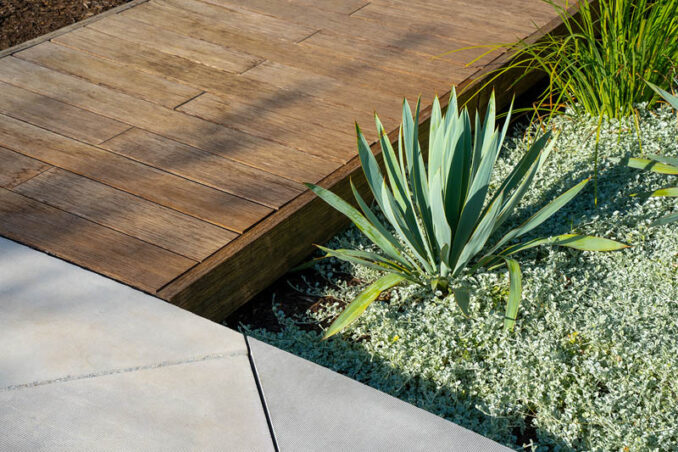
Recognizing the vast ecosystem services that healthy, mature trees provide—reducing heat island, absorbing pollutants, capturing carbon, creating habitat, and more—all trees throughout the project are provided with soil volumes that exceed city and industry standards. This additional soil volume, created through the design of large, connected beds, ensures the trees’ long-term health and ability to provide maximum environmental benefits into the future. Within the streetscape, where expansive open beds were not feasible, these connected soils were achieved using soil cells beneath the paving. In the roof garden, collaboration with the architects and structural engineers was crucial to establishing a series of large, at-grade plant beds that protect roots from temperature extremes and allow for a healthy soil ecosystem. Despite the site’s redevelopment from a single, small restaurant to a 15-story tower, the quantity of trees drastically increased from 6 ornamental trees to 53 shade trees—showcasing the possibilities of thoughtful, high-density design.
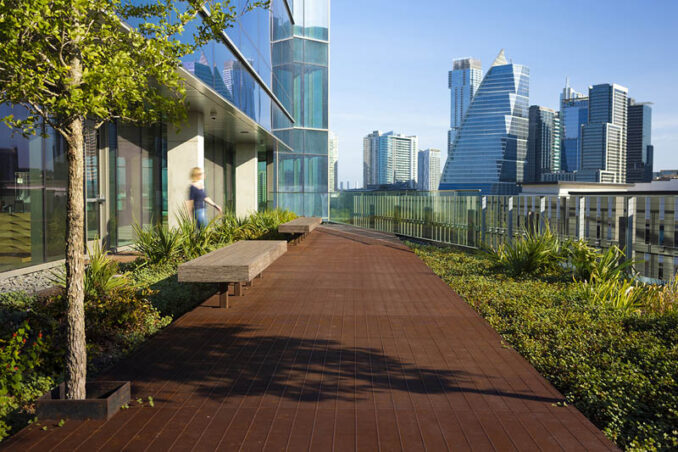
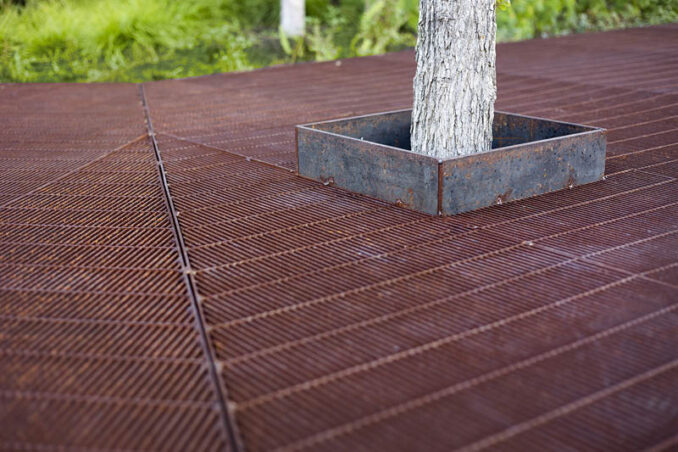
The true gem of the project is the 7th floor roof garden—a lush oasis that creates a refuge from the urban environment. Tucked behind the tower and sheltered from the intense afternoon sun, a woodland-inspired garden emphasizes calm, wellness, and rejuvenation. The use of raw, unfinished, and natural materials such as recycled bamboo, steel bar grating, and textured concrete pavers embrace the patina of time, and complement the surrounding contemporary architecture. The square footage devoted to planting exceeds that of occupiable space. This proportion is rare for commercial roof decks, as is the use of large shade trees rather than small ornamental trees. Twenty-three native cedar elms were installed at various sizes to further evoke a naturalistic, forest-like feel. The subtle topographic design creates shallow berms and slides below the walkways, giving the impression that the steel and bamboo boardwalks hover above a pre-existing landscape. A highly diverse plant palette responds to the roof’s range of microclimates, and was designed to thrive with more frequent irrigation to avoid excess reclaimed water being unnecessarily released into the city’s stormwater system.
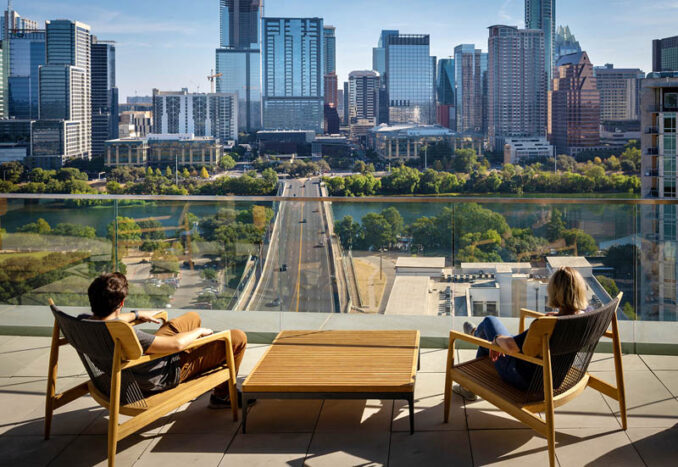
On a site where space is limited and environmental goals are high, every portion of the landscape is somehow performative. Whether supporting accessible and multimodal circulation, combating heat island, or increasing urban biodiversity, each element of the design works toward achieving one or more goals to improve the urban environment.
RiverSouth
Location: Austin, Texas, USA.
Collaborators:
dwg.
Beck Group
WGI
Hines Inc
MEJ & Associates
Cardno
Stream Realty
Images Credit: Courtesy of dwg.
